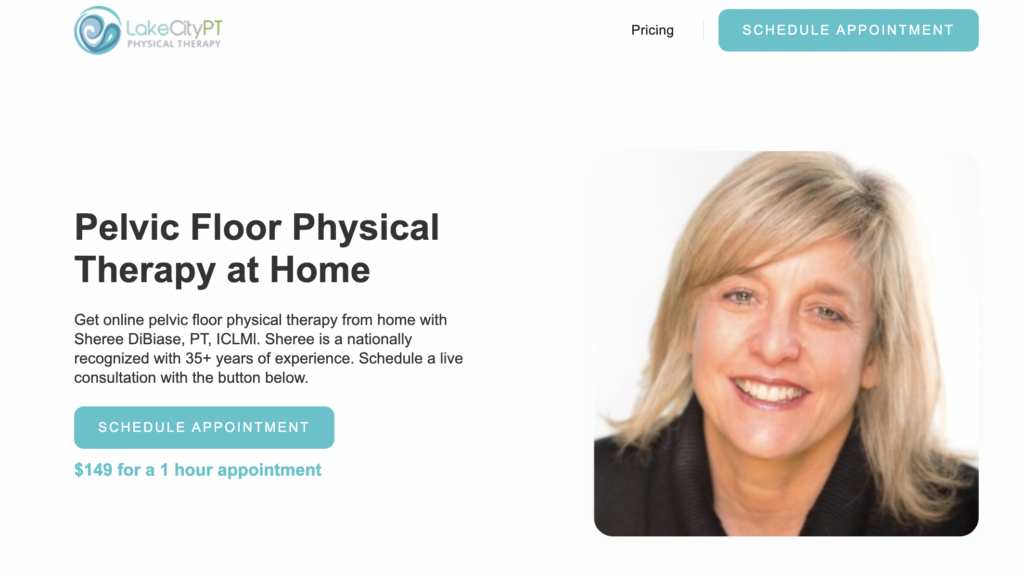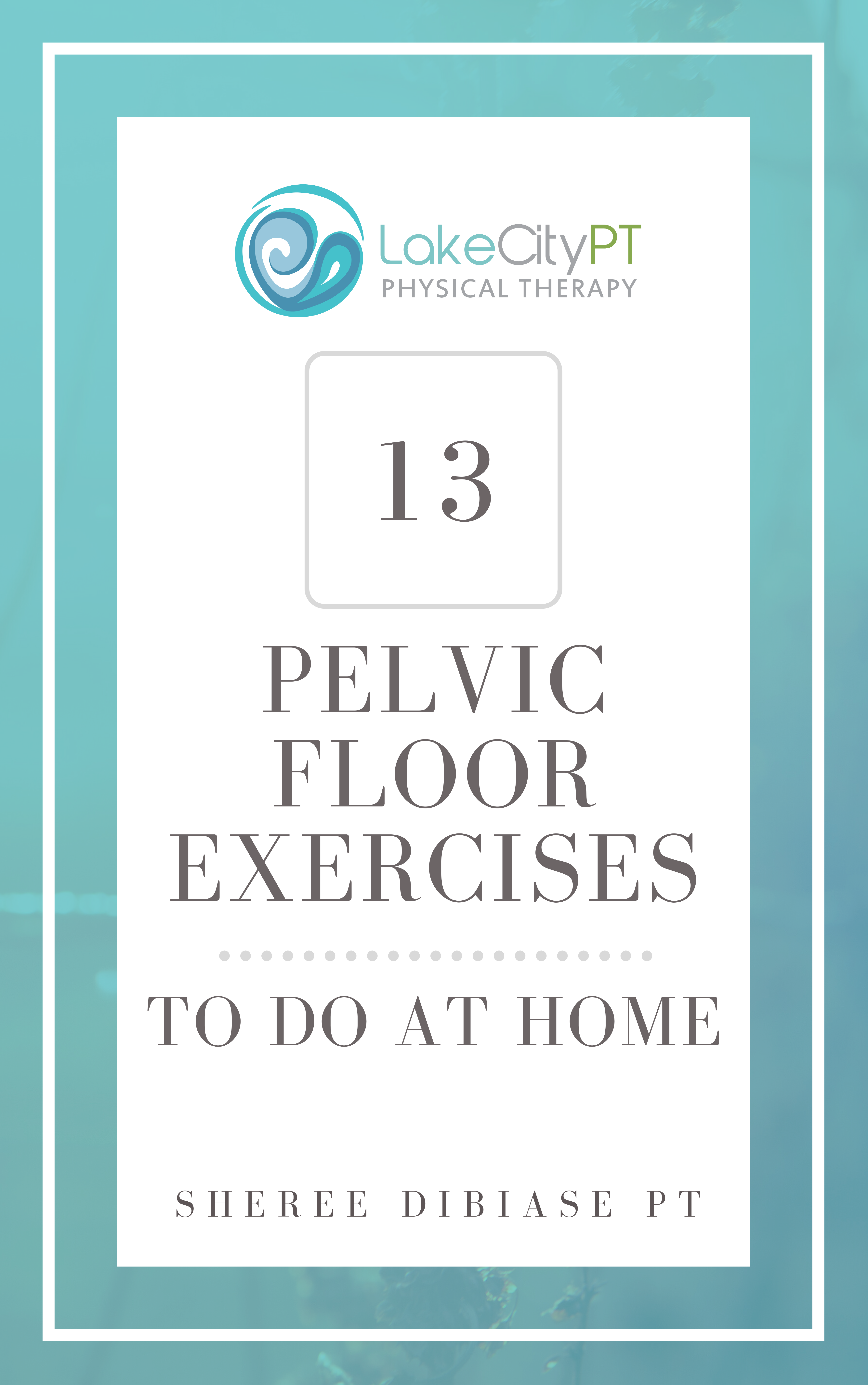Pelvic Floor Pain After Exercise
“No pain, no gain” – this is a motto for countless pro athletes and fitness enthusiasts. But, when it comes to pelvic pain, it is not something that you can look the other way. That’s because this pain can instantly put your workout sessions at a standstill.
It could also be a sign of a more pressing issue. The aches could emerge out of nowhere, like a sharp and brief pain. They could affect the hips and lower abdomen. Depending on what’s causing the issue, you could have chronic or fleeting pain.
If you have pelvic floor pain after exercise, then you’ve come to the right place. Here, we will talk about what’s pulling the strings and causing the discomfort. We also compiled some practical tips for you to manage it.
Related Articles
Online Pelvic Floor Physical Therapy
Get pelvic floor physical therapy from home. Our online pelvic floor physical therapy can help with incontinence, constipation, painful intercourse and more.
Schedule a live video call consultation with the button below.
My Pelvis Hurts After Exercise – What Does It Mean?
According to experts, over 28 million women in the U.S. are suffering from pelvic floor disorders. Characterized with painful intercourse, incontinence, fullness, and inability to use a tampon, these disorders can drastically affect a person’s quality of life.
What often causes pain in the pelvic area are conditions like endometriosis, irritable bowel syndrome, and chronic pelvic inflammatory disease. Having ovarian cysts, UTI, organ prolapses, and similar complications can cause pain in the pelvis. If your pelvis is hurting after an exercise, it could be caused by many factors.
Such as:
- High impact workout – Options like tennis, rugby, gymnastics, and skiing are high-impact exercises. Such vigorous activities can overload the muscles of the pelvic floor and cause pain when you are done exercising.
- Repeated or heavy lifting – Heavyweights could amplify abdominal pressure. Therefore, they can put a lot of strain on the pelvic floor muscles, especially when you don’t watch your posture or pay attention to the lifting techniques.
- Obesity – Having a couple of extra pounds could add more pressure to the pelvis. Thus, causing pain when you exercise. It can also lead to a multitude of ailments like organ prolapse, overactive bladder, and incontinence.
- Menopause – Pelvic pain and menopause are more common than people think. The estrogen begins to plummet, thus thinning the pelvic floor muscles. In some women, these changes can manifest into pelvic pain.
- Smoking – It may sound far-fetched, but smoking can have something to do with the pain you are feeling—a lot of people cough due to their smoking habits. The chronic coughing is putting pressure on the affected area.
- Pelvic floor disorder – JAMA researchers weighted the prevalence estimates of pelvic floor disorders in 1,961 American women. Roughly 23.7% experienced symptoms of a single pelvic floor disorder, with an increased prevalence in older patients. Avoiding addressing the musculoskeletal deficits can cause pelvic pain.
Can Your Pelvic Floor Be Sore From Working Out?
Body mass index (BMI), age, and gender play a key role in diagnosing pain in the pelvis. Increased BMI adds pressure to the joints and affects the pelvic floor. When you pair that with extra stress, it is normal to feel sore after exercising. Particularly if you’ve led a sedentary lifestyle for a very long time.
The good thing is, the normal muscle soreness is a clear indicator that you are on the right path to getting stronger muscles. And this isn’t something to worry about. But, if the soreness is accompanied by debilitating pain, then you are probably doing something wrong with your exercise. Consult with a personal trainer or a physical therapist and follow their instructions. Doing each exercise the right way can help you avoid unwanted aches and minimize soreness.
What Does a Sore Pelvic Floor Feel Like?
The pain in the pelvis feels like a persistent cramp. It can be sharp or stabbing pain that shoots up the rectum and reproductive organs. The soreness, on the other hand, creates a burning feeling when you work out. The muscles are exhausted and tender to touch. But it’s not uncommon for the soreness to come with some tightness and dull aches.
Can Exercise Make Pelvic Floor Worse?
One of the most typical mistakes people make is thinking that the harder they exercise, the better. So, they go overboard with the workouts to get faster results. But, the body needs time to grow and adapt. Overburdening the muscles can have a negative effect. Too much core strengthening and resistance training can add pressure to the pelvis.
It’s a good idea to seek out professional help when dealing with bladder problems, leakage, or any pelvic floor disorder. When you practice pelvic floor exercises every day, you will optimize the results. Eventually, you can make the muscles stronger, prevent prolapse, and get your sex life back on track.
So, the answer is simple. Don’t push yourself too hard or strain the pelvic floor down. The idea is to take your time with the proper exercises so that the pelvis will get the support it needs. If you can’t do it alone, consult a pelvic floor physiotherapist.
Are Squats Good or Bad for Pelvic Floor?
Squats, planks, lunges, and other similar activities are good for the pelvic floor only if the muscles are already in a tip-top shape. But, for someone who is not up to snuff and goes overboard with the workouts, squats can trigger incontinence.
When paired with obesity, any strenuous activity can be a little bit tricky to deal with. That’s why it is important to know your limits and begin with the workouts you know your body can handle.
How to Relieve Pelvic Pain After Exercise?
Maintaining a healthy weight, hydration, and nutrient-rich diet can help the body recover quicker after an exercise. But, to avoid this kind of problem, Kegels are often the go-to choice. They prevent pelvic pain and preserve the pelvic floor. Usually, the aches and discomfort will dissipate in 2 to 3 days after your last exercise. If the pelvic pain doesn’t resolve on its own, talk to a doctor.
Wrap Up
Many factors can lead to pelvic pain post-workout. In about two to three days, this pain is supposed to subside. Make sure you do every exercise right to reduce the possibility of pelvic aches. Now that you know more about this problem, you will have an easier time managing it.
References
https://www.womenshealth.va.gov/WOMENSHEALTH/OutreachMaterials/ReproductiveHealth/PelvicHealth.asp
https://jamanetwork.com/journals/jama/fullarticle/182572
https://www.nhs.uk/conditions/pelvic-pain/
https://www.pelvicfloorfirst.org.au/news/471/what-not-to-do-at-the-gym/
https://www.continence.org.au/news/how-women-sabotage-their-pelvic-health



